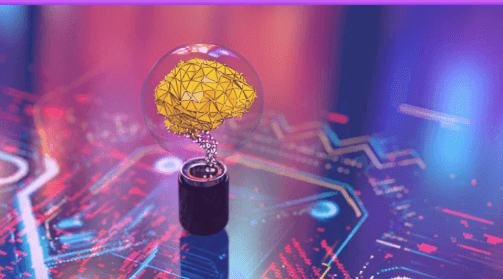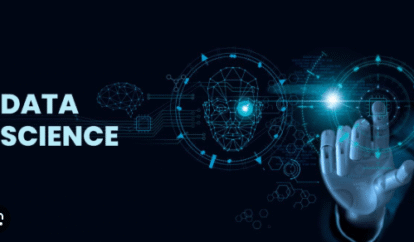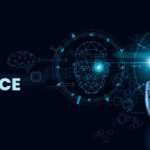Introduction
Machine learning applications are no longer the stuff of sci-fi — they’re deeply woven into the fabric of our daily lives, powering systems that recognize faces, recommend products, detect fraud, and even assist in medical diagnosis. Understanding machine learning applications is not just useful for data scientists or AI enthusiasts — it’s critical for business leaders, engineers, students, and anyone curious about how technology transforms the world. In this article, we explore the most compelling, real-world use cases of machine learning, explain how they work (at a high level), and share insights into what’s driving adoption and what challenges remain. We also incorporate LSI (latent semantic indexing) keywords — such as “AI use cases,” “predictive analytics,” “computer vision,” “recommendation systems,” and “automated decision making” — to make the article richer and more searchable.
By the end of this read, you will have a clearer view of how machine learning is applied across industries, what makes a use case successful, and where future innovation is likely to head. Let’s begin by surveying the key domains where machine learning is making the greatest impact.
What Is Machine Learning? A Quick Recap
Before diving into applications, it helps to briefly recap what machine learning (ML) is:
- ML is a subset of artificial intelligence (AI) where models learn from data to make predictions or decisions without being explicitly programmed for every scenario.
- There are several paradigms: supervised learning (learning from labeled data), unsupervised learning (finding structure in unlabeled data), and reinforcement learning (learning via feedback/interaction).
- Deep learning (neural networks with many layers) is a powerful subset often used in image, audio, and language tasks.
Understanding these types is helpful because different applications rely on different approaches.
Key Domains & Real-World Machine Learning Applications
Below are some of the most impactful and mature application areas for machine learning.
1. Healthcare & Medical Diagnostics
Machine learning is revolutionizing how we detect, diagnose, and treat diseases.
- Image-based diagnosis: Models analyze medical scans (X-rays, MRIs, CT scans) to detect signs of disease (e.g. tumors, fractures, lesions). In fields like radiology, dermatology, and pathology, ML models have shown diagnostic performance close to or even surpassing human experts under certain conditions.
- Predictive analytics and risk stratification: By mining electronic health records (EHRs), genetic data, and patient history, ML can predict which patients are at risk of readmission, complications, or certain disease onset.
- Drug discovery & personalized medicine: ML accelerates identification of promising drug candidates, simulates how compounds interact, and helps tailor treatments to individual genetic profiles.
These systems enhance clinician decision support, reduce error, and may improve outcomes when well validated.
2. Finance, Banking & Fraud Detection
The finance sector is a heavy user of machine learning — driven by need, scale of data, and competitive edge.
- Fraud detection and anomaly detection: Real-time models monitor transaction patterns and flag anomalies or suspicious behavior (e.g. unusual withdrawals, identity theft).
- Credit scoring & risk modeling: Instead of using rigid scoring rules, ML models ingest numerous features (income, spending patterns, behavioral data) to estimate default risk more accurately.
- Algorithmic trading and forecasting: Quantitative models forecast stock or asset price movements, drive high-frequency trading, or optimize investment portfolios.
These applications fall under predictive analytics and automated decision making, two powerful LSI themes.
3. Retail, E-Commerce & Recommendation Systems
One of the most widely encountered applications of machine learning is in personalized experiences online.
- Product recommendation engines: E-commerce platforms like Amazon, Netflix, and Spotify use ML models (collaborative filtering, content-based, hybrid models) to suggest items, movies, or songs tailored to your past behavior.
- Customer segmentation / clustering: Retailers group customers into segments based on purchasing patterns, demographics, browsing behavior, etc. Unsupervised clustering algorithms help define marketing or product strategies.
- Inventory demand forecasting: ML predicts future product demand by analyzing trends, seasonality, and external data (weather, economic indicators) to reduce overstock or stockouts.
- Chatbots and customer support automation: Conversational AI, powered by ML and NLP, handles customer queries, automates responses, and improves over time.
4. Computer Vision & Image / Video Processing
In the domain of visual data (images, video), the breakthroughs are compelling.
- Facial recognition and biometrics: Used in security, phone unlocking, surveillance, and identity verification.
- Object detection & tracking: Useful in autonomous vehicles (detecting pedestrians, obstacles, traffic signs), video analytics, and robotics.
- Image segmentation & medical imaging: In medical contexts, segmenting tumors or organs from scans is critical. In industrial applications, defect detection in manufacturing lines uses vision models.
- Augmented reality and visual enhancement: ML enhances images (denoising, super-resolution), applies filters, or powers AR overlays (e.g. furniture preview in a room).
5. Natural Language Processing & Speech
Text and voice are another frontier where ML has disrupted many applications.
- Speech recognition & voice assistants: Systems like Siri, Alexa, Google Assistant rely on ML to convert spoken words to text and understand intent.
- Machine translation / language models: Translating between languages (e.g. Google Translate) or generating text (e.g. GPT) are powered by deep learning and transformer architectures.
- Sentiment analysis / text classification: Companies use these models to detect customer sentiment in reviews, social media, or feedback forms.
- Text summarization / question answering: Tools extract key insights from long documents, answer queries, or produce summaries automatically.
6. Autonomous Systems & Robotics
In systems that physically act on the world, machine learning is essential.
- Self-driving vehicles: Autonomous cars use sensor fusion (cameras, LiDAR, radar), perception (object detection), planning, and control models to navigate environments.
- Industrial robots & drones: Robots powered by ML adapt to variable conditions, perform quality inspections, route planning, or perform delicate tasks in manufacturing or warehousing.
- Predictive maintenance: Machines in factories, aircraft, or infrastructure are monitored in real time. ML models predict failures or maintenance needs before breakdowns happen.
7. Scientific Research & Materials Science
Emerging applications highlight ML’s potential in scientific discovery.
- Material design & discovery: In materials science, ML predicts properties of novel compounds, accelerates discovery of new materials, and models crystal structures.
- Genomics & biological sequence modeling: ML models are used to understand DNA, predict protein folding, detect genetic mutations, and support bioinformatics.
- Climate modeling, weather forecasting & environmental monitoring: ML enhances existing simulation models, improves flood forecasting (e.g. AI-based flood forecasting) and climate prediction.
What Makes a Strong Machine Learning Use Case?
Not every problem is suited for ML. Here are success criteria and key considerations:
- Abundant high-quality data: ML thrives where there is rich, clean data (structured or unstructured).
- Clear, measurable objective: Tasks like classification, regression, anomaly detection are easier to validate.
- Value vs. cost tradeoff: The benefit (e.g. cost saving, revenue gain, risk reduction) must justify the investment.
- Feasibility & stability: The environment should be reasonably stable (i.e. not too much concept drift).
- Interpretable & explainable models (especially in critical domains): In fields like healthcare or finance, transparency is crucial.
- Robust evaluation and validation: Including cross-validation, testing on unseen data, dealing with biases.
A good example: detecting fraud in credit card transactions — large volumes of labeled historical data exist; business impact is high; and models can be continuously refined.
Challenges, Risks & Ethical Considerations
As powerful as ML is, it’s not a silver bullet. Some challenges and risks include:
- Bias, fairness & fairness audits: Models can inherit biases from training data, leading to unfair outcomes.
- Overfitting / generalization issues: A model may perform well on training data but fail on new instances.
- Interpretability vs. complexity: Deep neural networks may be accurate but opaque.
- Data privacy and security: Sensitive domains (healthcare, finance) require strong safeguards and compliance.
- Concept drift & model maintenance: Real-world distributions shift over time, so models must be retrained.
- Scalability & infrastructure: Deployment often requires distributed computing, real-time inference systems, and monitoring.
- Regulatory compliance & auditability: Especially in regulated sectors, ML systems may require explainability and traceability.
Successful real-world ML deployment involves not just building models, but designing full pipelines — data engineering, validation, monitoring, retraining, user feedback loops, and governance.
Future Trends & Emerging Directions
- Explainable AI (XAI): Increasing demand in high-stakes sectors for models whose decisions can be explained and trusted.
- Federated learning / privacy-preserving ML: Training models across distributed data sources without centralizing sensitive data.
- AutoML & democratization: Automated model selection, hyperparameter tuning, and pipeline building — making ML more accessible.
- Hybrid AI architectures: Combining symbolic reasoning, rules, and data-driven models for better generalization.
- Quantum machine learning: Early research indicates possible speedups for certain tasks (e.g. chip design) using hybrid classical-quantum methods.
- Continual learning / lifelong learning: Models that continuously adapt without catastrophic forgetting.
- AI in creative domains: Generative AI (images, audio, text) continues to evolve, offering new use cases beyond automation into creativity.
Conclusion
Machine learning applications have moved far beyond experimental labs and are now central to how we live, work, and innovate. From diagnosing disease to detecting fraud, personalizing content, powering autonomous systems, and accelerating scientific discovery, the use cases are rich and expanding. The real-world success of ML depends not only on model performance but on robust data pipelines, rigorous validation, interpretability, ethical safeguards, and maintenance infrastructure.
As we look ahead, the integration of federated learning, AutoML, explainability, and quantum innovations promises more powerful and responsible systems. For professionals, adopting these applications means mastering more than algorithms — it means understanding full system design, governance, and user-centric deployment. For organizations, embracing the right ML use cases can drive efficiency, new revenue streams, and competitive advantage.
If you’d like, I can also provide case studies or code examples of machine learning applications in your industry — would you prefer that next?
FAQs (People Also Ask) — Around “Machine Learning Applications”
1. What are the most common use cases of machine learning today?
Common use cases include recommendation engines, fraud detection, medical diagnosis, image recognition, speech recognition, predictive maintenance, and autonomous vehicles.
2. How is machine learning applied in healthcare?
In healthcare, ML is used for analyzing medical images (e.g. X-rays, MRIs), predicting disease risk from patient records, optimizing treatment personalization, and speeding up drug discovery.
3. Can small businesses leverage machine learning applications?
Yes — small businesses can use ML for customer segmentation, demand forecasting, chatbot support, predictive analytics on sales, and personalization — often via cloud ML services or prebuilt APIs.
4. What is the difference between AI use cases and machine learning applications?
AI is a broader term that includes rule-based systems, expert systems, and symbolic logic, while machine learning applications specifically refer to systems that learn from data. All ML applications are AI, but not all AI systems use ML.
5. What challenges do companies face when implementing machine learning applications?
Challenges include data quality and volume, bias and fairness, interpretability, infrastructure and scalability, changing data distributions (concept drift), regulatory compliance, and deployment/maintenance complexity.





 “Data Science Roadmap: Your Step-by-Step Guide to Success”
“Data Science Roadmap: Your Step-by-Step Guide to Success”